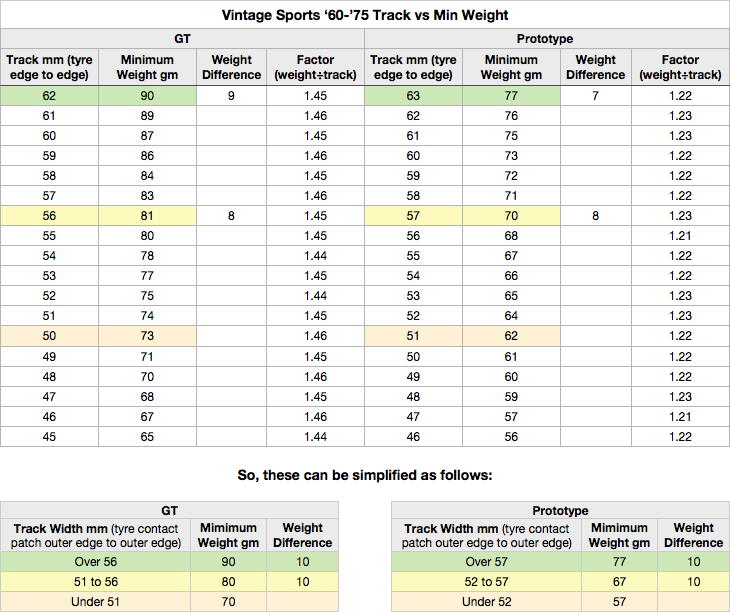
I've broken it into three groups, denoted by the green, yellow and orange colours. The first column in the top chart is the widest track width on the car (front or rear), the second is the car minimum weight for the class, the third column is the weight difference from the previous group and the fourth column is a factor based on the weight divided by the track width. You'll see that the factors are all basically the same, which means that the weight to track width ratio is maintained for all values.
I then simplified everything above by summarising it into the three levels at the bottom of the graphic. In the case of GT, these are
- Track widths over 56mm - cars must weigh at least 90gm
- Track widths51mm to 56mm - cars must weigh at least 80gm
- Track widthsunder 51mm - cars must weigh at least 70gm.
The idea seemed good in theory, however I'm still not sure if it will make a significant enough difference to justify the further complication in the regs. So far, I've set up the Ferrari 275P which I raced in the Vintage Sports Prototype class at the previous event by reducing its weight based in its 51mm rear track. The weight came down from 77.9gm to 65.3gm (12.9gm) and I can even take it down to the chart's allowed figure of 57gm with lighter components. I ran some laps with this lighter weight last night and found the car to be definitely more lively, although I could not equal the time I had set with it in qualifying at the last event.
So, nothing conclusive as yet. I still have some more testing to do.